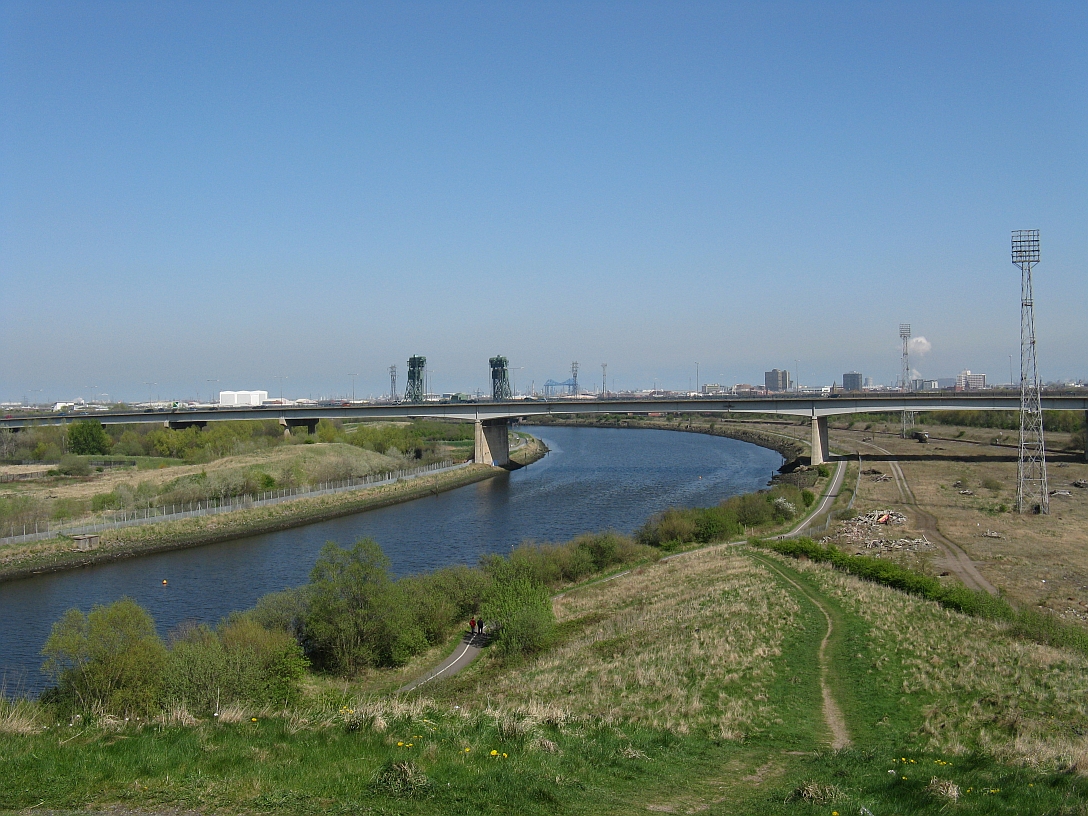|
Carlton, County Durham
Carlton is a village and civil parish within the borough of Stockton-on-Tees and ceremonial county of County Durham, England. The population of the civil parish taken at the 2011 census was 726. It is situated a few miles (several km) to the north-west of Stockton-on-Tees, a short distance from the village of Redmarshall. History Although subject to much new building in the past decade, the village still retains its medieval layout, with houses facing each other across the main street, and with strips of land in front and behind. This layout had been identified as Norman, probably dating to the rebuilding of the village after William's harrying of the North. The origin of the village of Carlton lies in the remote past, the pattern of the village was probably determined in the 11th or 12th century when estate re-organisation was commenced. It is part of the ecclesiastical parish of Redmarshall which came under the auspices of the Bishop of Durham, and is situated north of th ... [...More Info...] [...Related Items...] OR: [Wikipedia] [Google] [Baidu] |
Stockton-on-Tees (borough)
The Borough of Stockton-on-Tees is a unitary authority with borough status in the counties of County Durham and North Yorkshire, England. The borough had a population of 191,600 in 2011. The main settlement and namesake of the borough is Stockton-on-Tees, which lies on the north bank of the River Tees with the towns of Billingham and Norton-on-Tees. All three towns are in County Durham. The towns of Ingleby Barwick, Thornaby-on-Tees and Yarm are south of the river in North Yorkshire. The borough governed by Stockton-on-Tees Borough Council, and the current mayor is Cllr Ross Patterson. The borough is part of Tees Valley with nearby boroughs of Darlington, Middlesbrough, Redcar and Cleveland and Hartlepool. All River Tees bridges from Yarm Viaduct to Transporter Bridge are in the borough at least on one side, with the Borough of Middlesbrough to the south downstream on the other side to the east of the borough. Teesside International Airport is shared between the b ... [...More Info...] [...Related Items...] OR: [Wikipedia] [Google] [Baidu] |
Women's Institutes
The Women's Institute (WI) is a community-based organisation for women in the United Kingdom, Canada, South Africa and New Zealand. The movement was founded in Stoney Creek, Ontario, Canada, by Erland and Janet Lee with Adelaide Hoodless being the first speaker in 1897. It was based on the British concept of Women's Guilds, created by Rev Archibald Charteris in 1887 and originally confined to the Church of Scotland. From Canada the organisation spread back to the United Kingdom, motherland, throughout the British Empire and Commonwealth of Nations, Commonwealth, and thence to other countries. Many WIs belong to the Associated Country Women of the World organization. History The WI movement began at Stoney Creek, Ontario in Canada in 1897 when Adelaide Hoodless addressed a meeting for the wives of members of the Farmers Institute, Farmers' Institute. WIs quickly spread throughout Ontario and Canada, with 130 branches launched by 1905 in Ontario alone, and the groups flourish in the ... [...More Info...] [...Related Items...] OR: [Wikipedia] [Google] [Baidu] |
Villages In County Durham
A village is a clustered human settlement or community, larger than a hamlet but smaller than a town (although the word is often used to describe both hamlets and smaller towns), with a population typically ranging from a few hundred to a few thousand. Though villages are often located in rural areas, the term urban village is also applied to certain urban neighborhoods. Villages are normally permanent, with fixed dwellings; however, transient villages can occur. Further, the dwellings of a village are fairly close to one another, not scattered broadly over the landscape, as a dispersed settlement. In the past, villages were a usual form of community for societies that practice subsistence agriculture, and also for some non-agricultural societies. In Great Britain, a hamlet earned the right to be called a village when it built a church. [...More Info...] [...Related Items...] OR: [Wikipedia] [Google] [Baidu] |
Animal Farm
''Animal Farm'' is a beast fable, in the form of satirical allegorical novella, by George Orwell, first published in England on 17 August 1945. It tells the story of a group of farm animals who rebel against their human farmer, hoping to create a society where the animals can be equal, free, and happy. Ultimately, the rebellion is betrayed, and the farm ends up in a state as bad as it was before, under the dictatorship of a pig named Napoleon. According to Orwell, ''Animal Farm'' reflects events leading up to the Russian Revolution of 1917 and then on into the Stalinist era of the Soviet Union. Orwell, a democratic socialist, was a critic of Joseph Stalin and hostile to Moscow-directed Stalinism, an attitude that was critically shaped by his experiences during the May Days conflicts between the POUM and Stalinist forces during the Spanish Civil War. In a letter to Yvonne Davet, Orwell described ''Animal Farm'' as a satirical tale against Stalin ("'"), and in his essay "Why I W ... [...More Info...] [...Related Items...] OR: [Wikipedia] [Google] [Baidu] |
Stalinism
Stalinism is the means of governing and Marxist-Leninist policies implemented in the Soviet Union from 1927 to 1953 by Joseph Stalin. It included the creation of a one-party totalitarian police state, rapid industrialization, the theory of socialism in one country, collectivization of agriculture, intensification of class conflict, a cult of personality, and subordination of the interests of foreign communist parties to those of the Communist Party of the Soviet Union, deemed by Stalinism to be the leading vanguard party of communist revolution at the time. After Stalin's death and the Khrushchev thaw, de-Stalinization began in the 1950s and 1960s, which caused the influence of Stalin’s ideology begin to wane in the USSR. The second wave of de-Stalinization started during Mikhail Gorbachev’s Soviet Glasnost. Stalin's regime forcibly purged society of what it saw as threats to itself and its brand of communism (so-called " enemies of the people"), which inc ... [...More Info...] [...Related Items...] OR: [Wikipedia] [Google] [Baidu] |
Whitton Bridge Pasture
Whitton Bridge Pasture is a Site of Special Scientific Interest (SSSI) in the unitary authority of Stockton-on-Tees, England. At 3.18 hectares (7.9 acres) it lies to the south of Whitton village and north west of Stockton-on-Tees. SSSIs are chosen by Natural England, and Whitton Bridge Pasture was designated in 2004 because of its biological interest. It is one of 18 SSSIs in the Cleveland area of search. The biological interest is focused on the species-rich mesotrophic grassland found across the site, which is actively maintained by grazing. The species present are predominantly grasses, although herbs and orchids are also found. The area has been classified as MG5 under the British National Vegetation Classification because of the species composition. The site is small and isolated, and therefore requires careful management to avoid damage caused by activity on neighbouring land. Reason for notification SSSIs are designated by Natural England, previousl ... [...More Info...] [...Related Items...] OR: [Wikipedia] [Google] [Baidu] |
Whitton, County Durham
Whitton is a village and former civil parish, now in the parish of Stillington and Whitton, the borough of Stockton-on-Tees and the ceremonial county of Durham, England. It is situated to the north west of Stockton-on-Tees, near Stillington and Thorpe Thewles. Landmarks Approximately to the south of the village is Whitton Bridge Pasture, a Site of Special Scientific Interest notable for its species-rich grassland. Civil parish Whitton was formerly a township A township is a kind of human settlement or administrative subdivision, with its meaning varying in different countries. Although the term is occasionally associated with an urban area, that tends to be an exception to the rule. In Australia, C ... in the parish of Grindon, from 1866 Whitton was a civil parish in its own right, on 1 April 1983 part of the parish of Stillington was merged with Whitton, on 1 July 1983 the merged parish was renamed "Stillington & Whitton". In 1961 the parish of Whitton (prior to ... [...More Info...] [...Related Items...] OR: [Wikipedia] [Google] [Baidu] |
George Orwell
Eric Arthur Blair (25 June 1903 – 21 January 1950), better known by his pen name George Orwell, was an English novelist, essayist, journalist, and critic. His work is characterised by lucid prose, social criticism, opposition to totalitarianism, and support of democratic socialism. Orwell produced literary criticism, poetry, fiction and polemical journalism. He is known for the allegorical novella ''Animal Farm'' (1945) and the dystopian novel '' Nineteen Eighty-Four'' (1949). His non-fiction works, including '' The Road to Wigan Pier'' (1937), documenting his experience of working-class life in the industrial north of England, and '' Homage to Catalonia'' (1938), an account of his experiences soldiering for the Republican faction of the Spanish Civil War (1936–1939), are as critically respected as his essays on politics, literature, language and culture. Blair was born in India, and raised and educated in England. After school he became an Imperial policeman ... [...More Info...] [...Related Items...] OR: [Wikipedia] [Google] [Baidu] |
River Tees
The River Tees (), in Northern England, rises on the eastern slope of Cross Fell in the North Pennines and flows eastwards for to reach the North Sea between Hartlepool and Redcar near Middlesbrough. The modern day history of the river has been tied with the industries on Teesside in its lower reaches, where it has provided the means of import and export of goods to and from the North East England. The need for water further downstream also meant that reservoirs were built in the extreme upper reaches, such as Cow Green Reservoir, Cow Green. Etymology The name ''Tees'' is possibly of Common Brittonic, Brittonic origin. The element ''*tēs'', meaning "warmth" with connotations of "boiling, excitement" (Welsh language, Welsh ''tes''), may underlie the name. ''*Teihx-s'', a root possibly derived from Brittonic ''*ti'' (Welsh ''tail'', "dung, manure"), has also been used to explain the name ''Tees'' (compare River Tyne#Origins of name, River Tyne). Geography The river drains and ... [...More Info...] [...Related Items...] OR: [Wikipedia] [Google] [Baidu] |
County Durham
County Durham ( ), officially simply Durham,UK General Acts 1997 c. 23Lieutenancies Act 1997 Schedule 1(3). From legislation.gov.uk, retrieved 6 April 2022. is a ceremonial county in North East England.North East Assembly �About North East England. Retrieved 30 November 2007. The ceremonial county spawned from the historic County Palatine of Durham in 1853. In 1996, the county gained part of the abolished ceremonial county of Cleveland.Lieutenancies Act 1997 . Retrieved 27 October 2014. The is the of [...More Info...] [...Related Items...] OR: [Wikipedia] [Google] [Baidu] |
Harrying Of The North
The Harrying of the North was a series of campaigns waged by William the Conqueror in the winter of 1069–1070 to subjugate northern England, where the presence of the last Wessex claimant, Edgar Ætheling, had encouraged Anglo- Danish rebellions. William paid the Danes to go home, but the remaining rebels refused to meet him in battle, and he decided to starve them out by laying waste to the northern shires using scorched earth tactics, especially in the city of York, before relieving the English aristocracy of their positions, and installing Norman aristocrats throughout the region. Contemporary chronicles vividly record the savagery of the campaign, the huge scale of the destruction and the widespread famine caused by looting, burning and slaughtering. Some present-day scholars have labelled the campaigns a genocide, although others doubt whether William could have assembled enough troops to inflict so much damage and have suggested that the records may have been exaggera ... [...More Info...] [...Related Items...] OR: [Wikipedia] [Google] [Baidu] |







